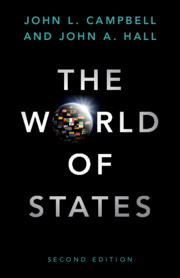Book contents
- The World of States
- The World of States
- Copyright page
- Contents
- Tables
- Preface to the First Edition
- Preface to the Revised, Second Edition
- Introduction
- 1 The Past
- 2 Conditions of Existence, Old and New
- 3 Challengers?
- 4 States of the Global South
- 5 The North
- 6 Still the Strongest Power on Earth?
- Conclusion
- References
- Index
2 - Conditions of Existence, Old and New
Published online by Cambridge University Press: 28 May 2021
- The World of States
- The World of States
- Copyright page
- Contents
- Tables
- Preface to the First Edition
- Preface to the Revised, Second Edition
- Introduction
- 1 The Past
- 2 Conditions of Existence, Old and New
- 3 Challengers?
- 4 States of the Global South
- 5 The North
- 6 Still the Strongest Power on Earth?
- Conclusion
- References
- Index
Summary
Human history does not come neatly packaged in precise and sharply delineated boundaries. This is certainly true of the world in which states now exist both as objects and subjects. We turn first to a series of novelties, occurring at different times and with different levels of intensity, that have done a very great deal to create new conditions of existence within which states now have to live. But the past is to some extent the present and the future too, as the American playwright Eugene O’Neill stressed, so attention then turns to continuities of structure and behavior, to patterns of social life familiar to us from what we have said in the previous chapter about the past. A consideration of both leads to a conclusion that characterizes the nature of our world today. By explaining the general conditions – both old and new – within which states operate today, our discussion in this chapter provides a bridge from the last chapter, which gave a sweeping account of the development of states in light of their need to provide order, security, and belonging, to the next four, which discuss different species of states today.
- Type
- Chapter
- Information
- The World of States , pp. 55 - 79Publisher: Cambridge University PressPrint publication year: 2021

